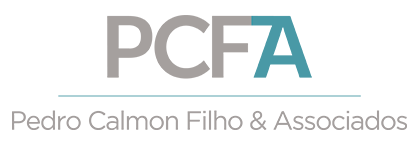Articles | 27 May, 2025
New NR-01 Rules: What Your Company Needs to Know About Mental Health at Work

Mental health in the workplace is gaining prominence with recent changes to Regulatory Standard No. 01 (NR-01). As of May 26, 2025, new requirements for managing psychosocial risks in the work environment will come into effect, demanding adaptation and revision of occupational safety and health programs. It’s important to note that the first year will be educational and advisory, allowing companies to prepare for these new obligations, as formal enforcement will only begin on May 26, 2026.
What are Psychosocial Risks and Why Do They Matter?
For the first time, NR-01 explicitly includes the identification of work-related psychosocial risks in the Occupational Risk Management (GRO). Psychosocial risks are factors present in how work is organized, in interpersonal relationships, and in the content of tasks that can cause stress and negatively impact workers’ mental and physical health. It’s crucial to understand that these risks are not inherent to the individual but rather to the work environment itself, meaning how work is structured, managed, and executed.
The updated NR-01 elevates mental health to the same level of importance as physical health. This is because moral harassment, for example, was already considered a risk to be prevented since 2023. Now, the focus expands to preventing stress, burnout, and depression at work, among other health issues.
Key Changes in NR-01 and Their Practical Implications
The changes in NR-01, which are implemented through the Risk Management Program (PGR), bring significant shifts. Here are the main highlights:
- Inclusion of Psychosocial Risk Factors: Subitem 1.5.3.1.4 of NR-01 now explicitly includes work-related psychosocial risk factors in the GRO. It’s important to emphasize that only psychosocial risks directly linked to the job are included in the GRO.
- GRO Stages: Item 1.5.3.2 of NR-01 defines the steps a company must follow in the GRO: avoiding or eliminating hazards, identifying hazards, evaluating risks, classifying risks, adopting prevention measures, and monitoring occupational risk control.
- Working Conditions and NR-17: Subitem 1.5.3.2.1 adds that, in this process, the company must consider working conditions as per Regulatory Standard No. 17 (NR-17), including work-related psychosocial risk factors.
- Continuous Improvement: Subitem 1.5.3.4 requires companies to adopt necessary measures to assess and improve performance in Occupational Safety and Health (SST), maintaining a continuous improvement process.
- New Probability Definition: Subitem 1.5.4.4.5.3 presents a new definition of probability by risk type, including work-related psychosocial risk factors within ergonomic factors.
Operationally, companies must include work-related psychosocial risk factors in their PGRs and establish internal mechanisms to identify and combat stress, harassment, and excessive mental load among their employees.
Among the factors that companies should observe, map, and mitigate to prevent impacts on workers’ mental health are: chronic occupational stress, Burnout Syndrome, moral harassment, excessive mental load, isolation in the workplace, demand for hyperconnectivity, excessive workload, intense pace, excessive pressure for goals and deadlines, exhausting workdays, inflexible hours, lack of autonomy, and interpersonal conflicts.
The new wording of NR-01 also reinforces the link between the PGR and the List of Work-Related Diseases (LDRT), covering psychosocial risks such as depression, anxiety disorders, and Burnout Syndrome itself.
Managing Psychosocial Risks: An Integrated Approach with NR-17
To manage work-related psychosocial risk factors, it is essential to use the provisions of NR-01 in conjunction with NR-17 (Ergonomics). This combined approach, which may include Preliminary Ergonomic Analysis (AEP) and Ergonomic Analysis of Work (AET), begins with identifying psychosocial risk factors that can lead to health problems for the worker.
The Ministry of Labor and Employment (MTE) has provided a guide to assist in managing these risks, with examples of hazards (risk factors) and their potential consequences, such as mental disorders, DORT, and fatigue.
Essential Measures for Adaptation and Transition
Given the new provisions, it is advisable for companies to implement measures for a safe and structured transition. Some suggestions include:
- PGR Review and Adaptation: Map psychosocial risk factors and revise the existing PGR to ensure their proper identification, assessment, and control.
- Good Practices Manual: Develop a manual with good practice measures to foster a healthy work environment, suggesting digital signatures from all employees.
- “Health Week” Promotion: Conduct awareness and sensitization actions with lectures from specialists.
- Course and Training Planning: Implement a schedule of periodic courses and training for employees, leaders, and managers, addressing topics such as harassment, violence, anxiety, burnout, pressure for goals and deadlines, equality, diversity, and mental health at work.
- Availability of Listening Channels and Psychological Support: Provide listening channels and psychological support, in addition to implementing Psychological First Aid (PSP) Programs.
- Promotion of Supportive Environments: Offer spaces for meditation, psychotherapy, or psychological counseling.
- Internal Policy Updates: Review and, if necessary, create or update the company’s Code of Conduct, internal regulations, or other policies to explicitly include rules for combating sexual and moral harassment.
- Structuring Reporting Channels: Ensure the existence of effective, confidential, and secure reporting channels, with clear procedures for investigation and disciplinary measures.
- CIPA Engagement: Ensure that the CIPA (Internal Commission for Accident Prevention) is fully trained and involved in the implementation, monitoring, and inspection of these measures, with discussions recorded in meeting minutes.
- Periodic Review and Joint Action: Conduct periodic reviews of manuals, results, and actions taken, with joint action from Human Resources, Legal, Health, Consulting, and external Audit departments.
Deadlines and Inspection: What to Expect?
As mentioned, the changes to NR-01 come into effect on May 26, 2025, making the formal and detailed inclusion of psychosocial risk factors in the PGR mandatory from that date. However, Minister Luiz Marino of the MTE announced a one-year extension of the adaptation period. This means that until May 2026, inspections will be educational and informative, without the application of penalties such as fines, citations, or activity interdiction.
The Importance of Documentation and the Future of Mental Health at Work
The entire process of identifying, evaluating, and controlling psychosocial risks must be adequately documented. After the adaptation period, inspections may analyze documentation, records of mental health-related absences, and conduct interviews with workers to ascertain the actual conditions of the work environment.
Adapting to the new requirements of NR-01 is a crucial step towards creating healthier and more productive work environments. The team at PCFA – Pedro Calmon Filho & Associados has experience in areas such as institutional planning, compliance policies, and corporate investigations, always grounded in recognized certifications and best legal practices.
Pedro Calmon Neto
Maria Fernanda Rezende

